There's Sandakan and Chittagong; and then there's ZamboangaPrepared by Harold Stephens
Travel Correspondent for Thai Airways International
Do you like old movies; I mean the ones from the 1930s and 1940s? Exotic, dusky ports that have their settings in the Far East: a seething tropical waterfront filled with intrigue—hotel lobbies with cane chairs, revolving ceiling fans overhead and uncertain characters moving about; and strong cigars, coffee-eyed women and rum in tall glasses, with actors like Gary Cooper and Humphrey Bogart. Those were the days, you might say, as you long for the past, the rambunctious days of yesteryear
But hold on. It’s not too late! There are still ports like that in this day of ours. And believe it or not, with transportation the way it is today, you can visit these fascinating ports. Just the very sound of these exotic ports can make you want to go to a Thai Airways ticket office. Well, maybe
Let’s look at Chittagong. The first time I saw the place, I was making an overland jeep trip from Europe to Singapore. That was many years ago, and Chittagong was the main seaport of East Pakistan and not Bangladesh, and the capital was Dacca not Dhaka.
When I arrived in Dacca I discovered I couldn't drive through Burma to reach Thailand. I had no other choice but to drive south from Dacca to Chittagong and ship my jeep from there to Penang or Singapore. I went to the U.S. Embassy for information on Chittagong. The consul gave me the embassy report for their Foreign Service officers: “Chittagong, East Pakistan's largest port, is a small town, hot, with malaria and a variety of tropical diseases. There is no entertainment or nightlife, except for trips over weekends and holidays to Dacca, 160 miles north.”
Nevertheless, the drive from Dacca to Chittagong was packed with interest and excitement as I discovered. The road skirted the Assam, India, border. River barges with huge triangular sails moved slowly up the rivers and looked like picture post cards.
The road was narrow and straight, with little vehicular traffic, and followed a rail line. I caught up with a coal-burning train pulling a dozen cars, when abruptly it stopped. The engineer, fireman, guards, all suddenly leaped from the train and took cover in a ditch. I could see puffs of smoke coming from the forest beyond. Rifle fire! Someone in the forest was shooting at the train. I drove the jeep down over the bank and also took cover. Presently, a platoon of soldiers came running down the road. I then heard more shooting. In twenty minutes it was over, and again I was headed south.
It could have been a Humphrey Bogart movie, except I saw the bullet holes.
Darkness came when I was ten miles from Chittagong. I stopped to eat at a small roadside stall. A Moslem spoke English and asked where I was going. He suggested the rest house in Chittagong. He pointed to a man in a white robe and said if I carried him, he could show me how to get to the rest house. I agreed, and it was fortunate that I did. Chittagong was a congestion of ox-drawn carts and oil burning trucks rumbling over rutted streets and railroad tracks. Rickshaws pushed in between the lines of traffic. It was unlike any town I had ever seen.
We found the rest house and I took a room on the second floor. Nine boys, I counted them, came to my aid and unloaded the jeep, and of course, nine boys held their hands out in the end. It was worth the nine rupees.
I asked about food, and was told most of the restaurants were closed, but one room boy knew “a place where I could eat.” He brought along a friend and we started off in the jeep, turned down a mud road that actually was a watershed and parked at a dead end. The friend stood guard while the first boy led me across a bamboo bridge—with one pole serving as a guideline and another pole to walk upon. In the dark we came to a railroad track where, as it happened, a slow-moving passenger train was en route. We ran after the train, jumped aboard, squeezed thru the crowded compartment and jumped out on the other side.
We hurried down a wide avenue through a very primitive village and came to the waterfront. Riverboats were tied together. We jumped from one to the other until we came to the end boat, the largest one. We darted through the engine room past sleeping bodies and climbed a ladder. On the second level we encountered a man dressed in white. The room boy spoke to him and we were then led to a dining room—the captain's.
I said to the man in white: “Do you think the captain will mind?”
He answered: “I am the captain.” I paid him five rupees and dined on soup, curried fish, chicken and mango for desert. I skipped the coffee. When I returned to the rest house I was anxious to jot down my notes. Some day, I thought, I might want to recommend a place to eat in Chittagong. I just have.
As I said, that was a long time ago. It has, of course, changed. Chittagong size grew along with its stature. Thai Airways even had direct flights to there from Bangkok. I flew on a THAI flight to see what I had missed before.
To the south of town is one of the world's longest beaches, Cox's Bazaar, some 90 miles in length. And in the hills nearby are the Chittagong hill tribes, not unlike those in northern Thailand. The beach can get awfully boring, with no one on it, but exploring the hill tribe villages was exciting. In one village I met an Englishman married to a hill tribe princess. He kept me entertained for two days with stories, and he proved that Humphrey Bogart characters are still alive in Asia.
Sandakan came as a pleasant surprise. A few years back I was sailing in the central Philippines aboard my schooner when we received a warning that a typhoon was approaching. We hastily looked at the Sailing Directions: Borneo, as noted by early sailors, was 'land below the wind,' free of typhoons. Sandakan was a safe, deep-water port on the northeast coast of Sabah. We sailed for Sandakan.
In Sandakan, Sabah's big, busy boomtown, people call the huge logs bobbing in the Sulu Sea “floating money.” Logs float down wide rivers from timber forest surrounding the harbour, pass through the hands of Chinese merchants and are lifted onto massive freighters bound for Japan. This was our introduction as we sailed into the wide port and anchored in front of the Sandakan Yacht Club. That night we were struck by winds so violent that even with the engine running we dragged halfway across the harbour. So much for the Sailing Directions.
But we liked the town. It was obvious that Sandakan prospers like a mini Hong Kong, with the clatter of mahjong tiles and the wail of Chinese opera. Once the capital of north Borneo, during World War Two it was heavily bombed and levelled to its very foundations. After the war it was completely rebuilt into a modern town with new trimmings.
Sandakan has some interesting sights. Located 24 km away is the Sepilok Sanctuary, the world's largest orangutan community.
Orangutans which had lived in captivity and were abandoned by their owners are sent here for rehabilitation. They actually have to be taught to live in the forest again.
And 32 km from Sandakan across the bay are the hallowed Gomatang Caves, which are rich in the birds' nests used to make birds' nest soup. Sandakan is also a great starting point for jungle exploration. Dyaks live not too far inland.
Finally, there is Zamboanga, situated at the southern tip of Mindanao on the eastern shore of the Moro Gulf and the Celebes Sea, It’s one of my favorite ports in Asia. I will take readers there next week.
Harold Stephens
Bangkok
E-mail: ROH Weekly Travel (booking@inet.co.th)
Note: The article is the personal view of the writer and does not necessarily reflect the view of Thai Airways International Public Company Limited. | 
Chitagong City | | 
Take a trishaw | | 
| | 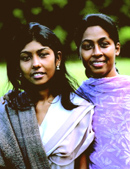
The Port of Chittagong | | 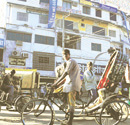
Pretty college girls | | 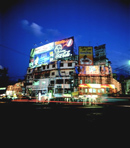
Chittagong, not much of a night life | | 
Sandakan, a sleepy port in Sabah | | 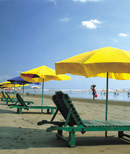
Cox’s Bazaar, a hundred kilometers of beach | | 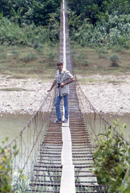
Photographer on Bianco on a swinging bridge | | 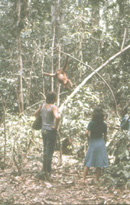
Sabah, home of the Orangutan | | 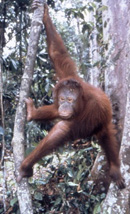
A school for Orangutans near Sandakan | | 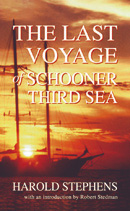
For a voyage to Sandakan |
|





